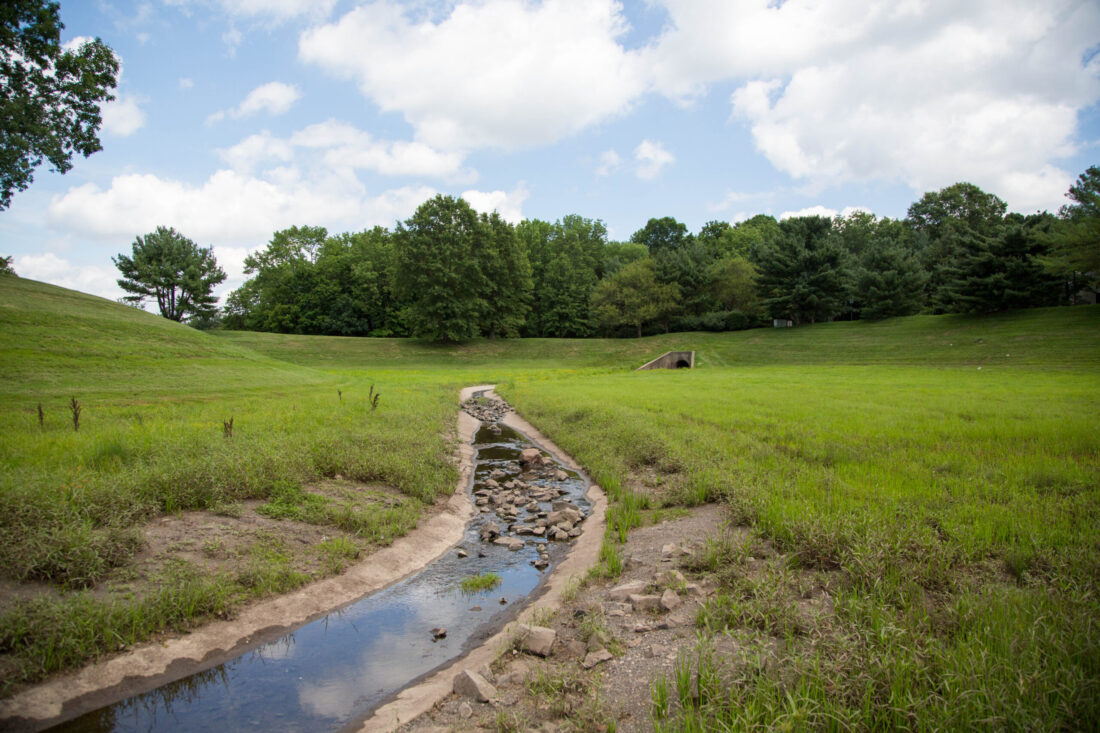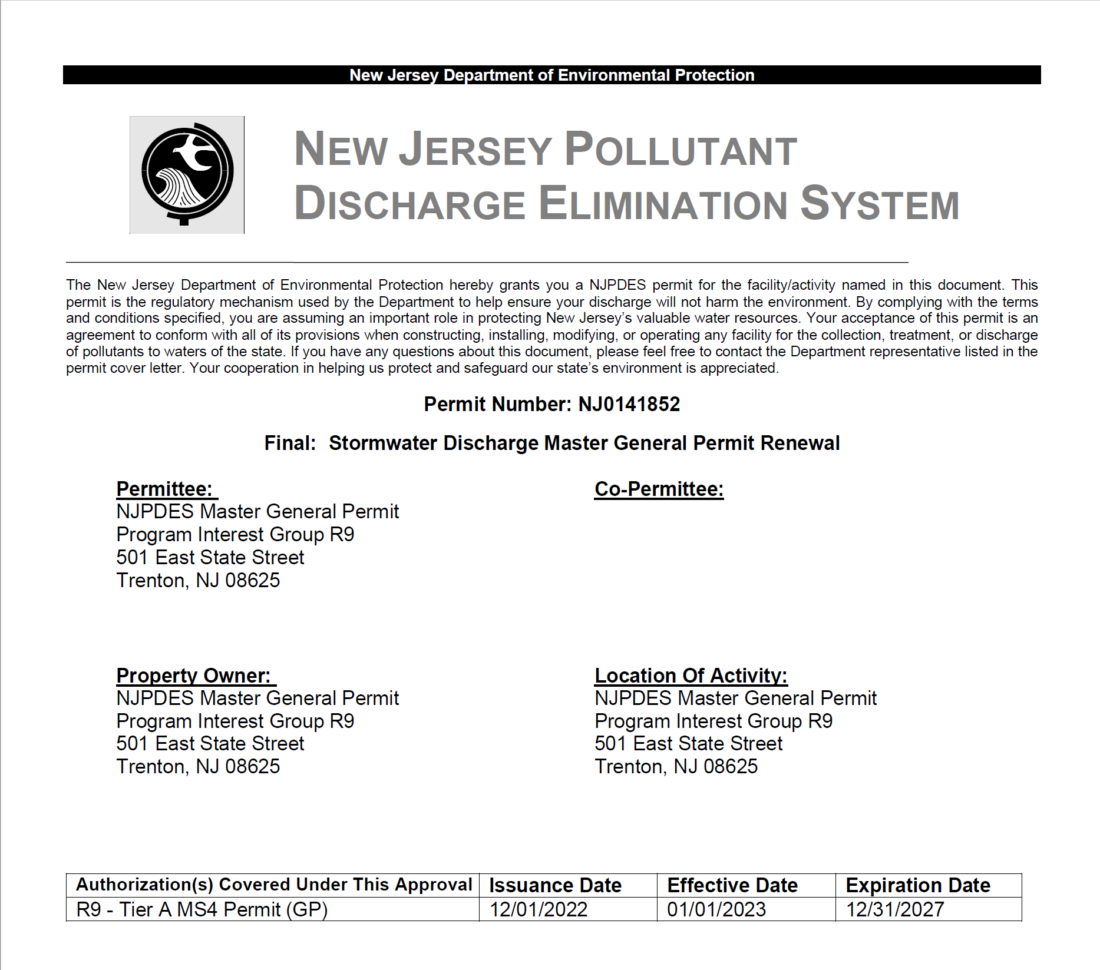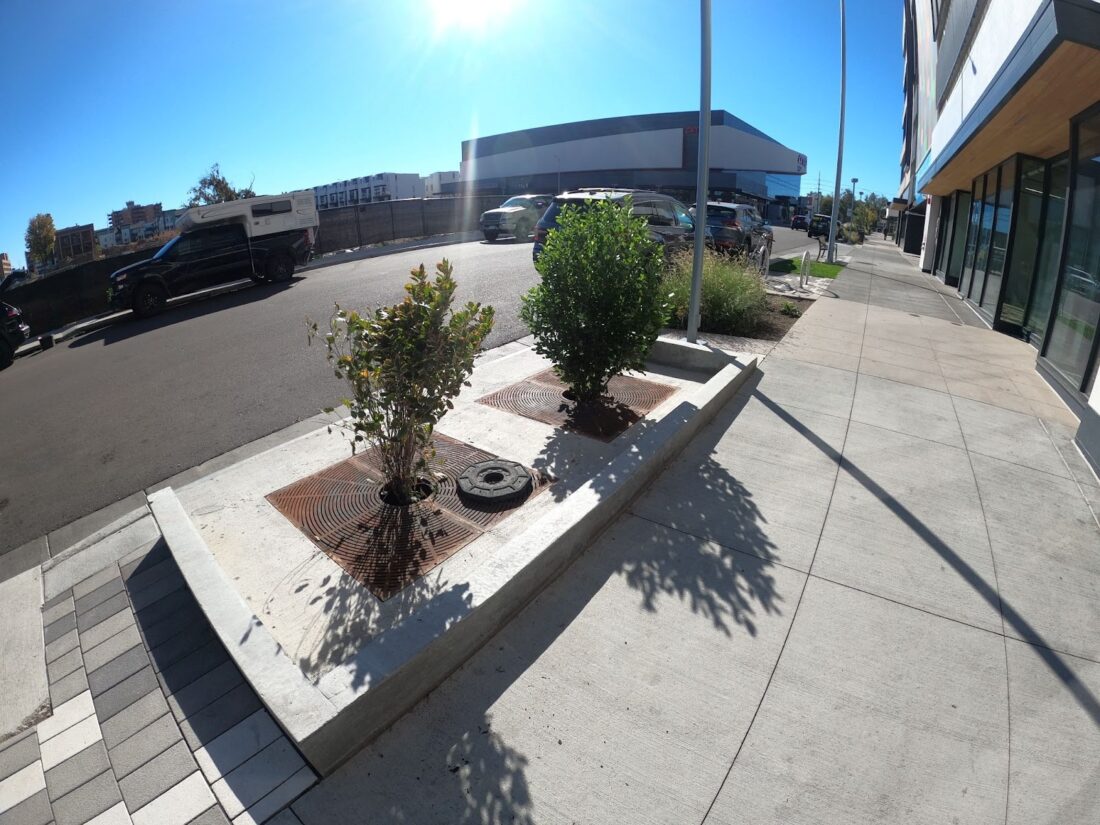
How Tree Ordinances Can Augment a Good Stormwater Management Plan
Spring has sprung, and so has planting season in most of the country. This is an optimal time to focus on a tree protection plan with the use of a tree preservation ordinance and its role in reducing stormwater pollution runoff. Growing choruses of stormwater professionals, including the United States Environmental Protection Agency (EPA) and local state agencies charged with implementing stormwater control solutions, have elevated the value of trees in effective stormwater management programs in recent years by implementing tree ordinances. This increased awareness is rapidly filtering from governmental entities to local residents and businesses, in recognition that some very tangible solutions to mitigate soil erosion, infiltration, pollutant reduction and more can be implemented simply by planting more trees.
The benefit of a tree protection plan in our environment is hardly unknown. Young elementary school students begin learning about trees when learning about oxygen and carbon dioxide. Tree farms and nurseries thrive because of the many values that trees offer, beginning with aesthetics and extending to shade features that increase real estate property values. The idea is not novel to any engineer or scientist or stormwater professional either, but the hierarchy in which trees are viewed as a stormwater management tool is changing, largely prompted by the effects of climate change and the ever-increasing development of previously forested lands. The list of benefits that trees provide is long: trees produce cleaner air, reduce noise pollution, reduce the effects of heat islands, contribute to lower street maintenance costs, and provide much needed shade for cars in parking lots, to name just a few. And in the stormwater world, the very existence of trees can lessen the devastating impacts of rain events and flooding, a benefit that grows exponentially in value as the frequency of extreme storms increase. This is why tree ordinances have become increasingly more common.
A tree ordinance that includes the planting of more trees is not a panacea, however, for stormwater control and tree protection planning, but trees do play a significant role in any comprehensive stormwater management plan. Mature trees in particular can provide significant stormwater quantity and rate control benefits through soil storage, interception, and evapotranspiration, which evaporate surface water, soil moisture and plant transpiration. Evaporation can reduce water levels in ponds and wetlands, and evapotranspiration dries the soil, along with factors such as air temperature, wind speed, solar radiation and humidity. Leaf canopies intercept falling rain, which reduces soil erosion, and some rain that lands on trees can evaporate before ever meeting the ground. Tree roots accept rainwater and promote infiltration, further reducing the risk of soil erosion. Larger trees do provide a greater benefit than smaller ones, or smaller species, but there is strong evidence that even new plantings immediately promote infiltration to the groundwater table and improve water quality by filtering pollutants.
Innovative Stormwater BMPs for Tree Preservation Ordinance Compliance
Tree boxes, tree wells, and tree trenches are examples of stormwater Best Management Practices (BMP’s) that are growing in popularity in community downtown areas and on commercial properties. These stormwater BMP’s are commonly referred to as green infrastructure stormwater control measures.
Green infrastructure stormwater tree BMP’s provide numerous benefits. Trees planted in these systems enhance the aesthetics of the area, intercept precipitation at the tree canopy, direct stormwater flow downward into the chambers, and where so available, direct excess runoff into the storm drain inlets. Tree preservation ordinances that are designed with street trees provide the added bonus of serving as a traffic calming measure when installed close to the curb line. The presence of the trees close to the road serves to narrow the field of vision of drivers, forcing attention to a more defined street area.
Tree boxes are typically pre-manufactured concrete boxes that are installed below grade and filled with formulated soil media that removes pollutants via filtration and adsorption, with the tree planted on top. The box functions as a bioretention system that collects stormwater and treats it prior to discharge into the storm sewer system. A great example of these are the Contech Filterra systems.
Tree Wells can be designed in a myriad of ways, but they generally are of three main types: open top tree wells, structural soil tree wells, or suspended pavement tree wells.
Open top tree wells are a simple system with a depressed area at the surface that collects water that soaks into the tree well rather than easily running off.
Structural soil tree wells are a more advanced type in which sidewalks are installed over the tree well’s specially blended soil, with a layer of open-graded gravel added above the deeper compacted soil. The gravel enables the stormwater to travel over the surface of the structural soils without compromising the sidewalks, while also promoting root growth.
The most advanced of the tree well types is the suspended pavement tree wells, which are usually proprietary systems. This type utilizes structural cells that transfer the weight of the pavement to deep soil levels, leaving an area of softer soil to aid in tree growth and to accept stormwater runoff. Depending on the design, there is either space left at the top of the structural cell or open-graded gravel added below the top of the suspended pavement cell.
Perhaps the most sophisticated and visually appealing BMP is a stormwater tree trench system. At a glance, this can look like a row of street trees in pits along the sidewalk, but below the surface there is a complex infiltration structure working to manage stormwater runoff. The stormwater tree trench runs along the sidewalk line, lined in permeable fabric, filled with stone, then soil, then tree. The trench is served by a dedicated inlet that collects stormwater then directs it to spaces intentionally created in the stone layer. This “stored” runoff waters the trees before infiltrating deeper into the system. When rainfall rates exceed the collection capacity, such as in severe storms, the overflow is directed straight into a storm drain inlet.
Engineers, scientists, environmental experts, and inventors of all stripes are continuously developing new technologies to create and improve green infrastructure stormwater control measures, and it is expected that tree systems will evolve over time as advances are made in this new field. These technologies should be considered when creating tree ordinances.
What Can Stormwater Regulation Such as Tree Ordinances Do?
The government, be it federal, state, or local, cannot solve our stormwater woes alone, or plant enough trees as part of a municipal tree ordinance or an overall campaign to effectively reduce the effects of flooding and stormwater runoff on its own. It can, and it is, increasing awareness of stormwater pollution and climate risks, through educational programs and guidance offered through appropriate channels, such as with stormwater discharge permits. What is a tree ordinance? As one example, the State of New Jersey revised its Stormwater General Permit for Municipal Separate Storm Sewer Systems (MS4) in 2023, and included a requirement for its municipal Tier A permittees to adopt a tree ordinance for removal and replacement ordinance as part of its list of community-wide measures. The municipal tree ordinance sets forth criteria for replacement trees to be planted when tree clearings or removals are approved via a permitted process, even if the replacements are planted elsewhere on the property. Developers and residents must adhere to the replacement quantities established in the ordinance, and the overall goal is to at least maintain a tree inventory equal to the one that existed prior to the removals. The State of New York is establishing additional requirements in response to the effects of climate change, and it is reasonable to expect that more and more jurisdictions will require strengthened environmental measures be added to industrial, commercial and municipal stormwater permits each time those permits are renewed.
All across the country, communities are suffering from extreme storms, flooding and stormwater pollution issues. It requires the cooperation and participation of both governmental agencies and the citizenry, from private companies and industries to individual residents. We can all take incremental steps, perhaps one tree at a time.
Would you like to learn more about what is green stormwater infrastructure?
Stormwater Compliance Solutions, LLC is an established industry leader in providing services to help our clients navigate the complexities involved in the successful planning and maintenance of stormwater management systems and programs. Our team of engineers and consultants can help you to implement effective stormwater solutions for commercial, industrial, and public properties, and develop programs to aid in stormwater permit compliance and stormwater risk management. Please contact our Compliance Division at 970-999-0480 or email [email protected] to discuss your stormwater management needs.




